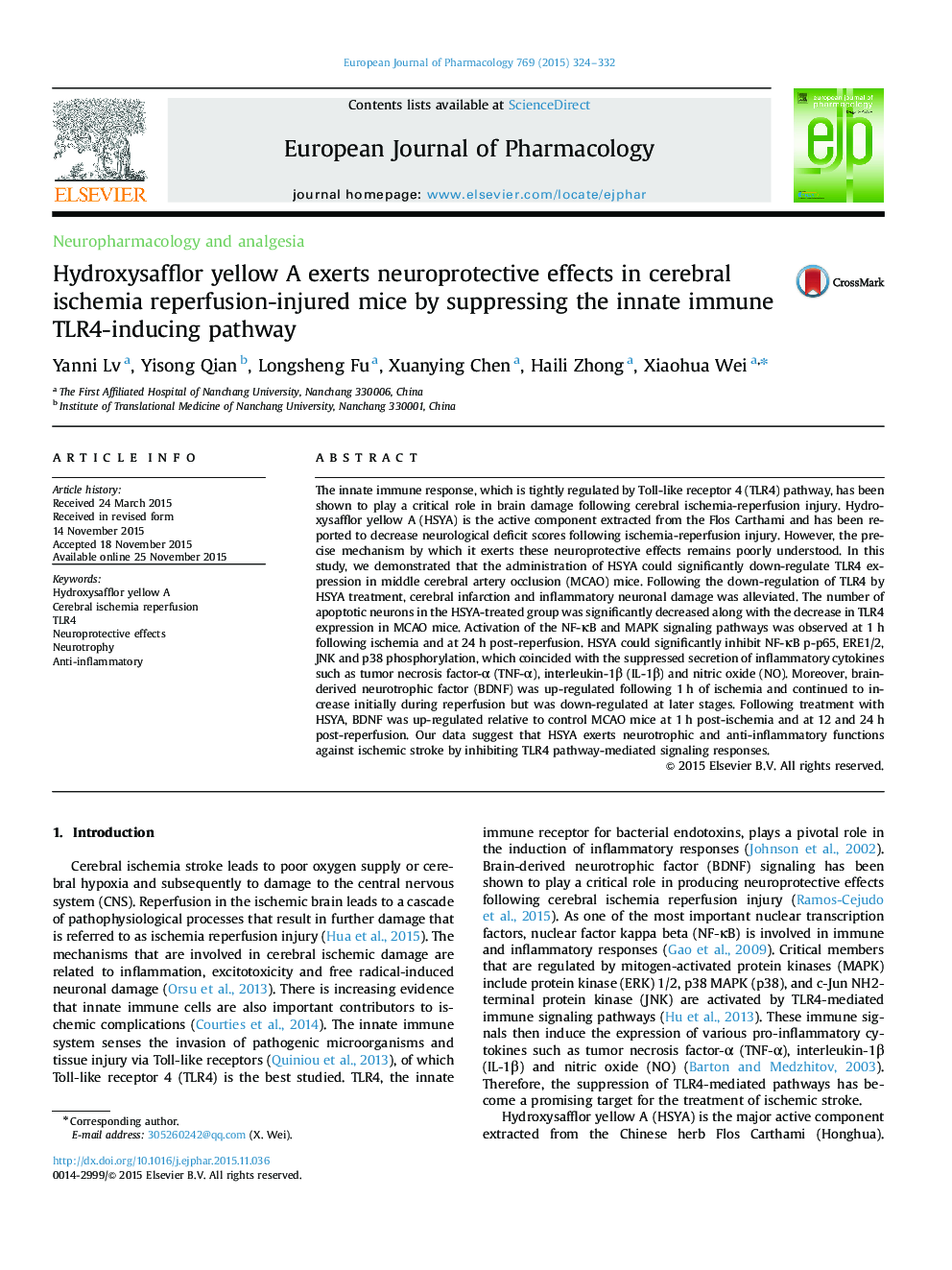| کد مقاله | کد نشریه | سال انتشار | مقاله انگلیسی | نسخه تمام متن |
|---|---|---|---|---|
| 2531281 | 1558911 | 2015 | 9 صفحه PDF | دانلود رایگان |

The innate immune response, which is tightly regulated by Toll-like receptor 4 (TLR4) pathway, has been shown to play a critical role in brain damage following cerebral ischemia-reperfusion injury. Hydroxysafflor yellow A (HSYA) is the active component extracted from the Flos Carthami and has been reported to decrease neurological deficit scores following ischemia-reperfusion injury. However, the precise mechanism by which it exerts these neuroprotective effects remains poorly understood. In this study, we demonstrated that the administration of HSYA could significantly down-regulate TLR4 expression in middle cerebral artery occlusion (MCAO) mice. Following the down-regulation of TLR4 by HSYA treatment, cerebral infarction and inflammatory neuronal damage was alleviated. The number of apoptotic neurons in the HSYA-treated group was significantly decreased along with the decrease in TLR4 expression in MCAO mice. Activation of the NF-κB and MAPK signaling pathways was observed at 1 h following ischemia and at 24 h post-reperfusion. HSYA could significantly inhibit NF-κB p-p65, ERE1/2, JNK and p38 phosphorylation, which coincided with the suppressed secretion of inflammatory cytokines such as tumor necrosis factor-α (TNF-α), interleukin-1β (IL-1β) and nitric oxide (NO). Moreover, brain-derived neurotrophic factor (BDNF) was up-regulated following 1 h of ischemia and continued to increase initially during reperfusion but was down-regulated at later stages. Following treatment with HSYA, BDNF was up-regulated relative to control MCAO mice at 1 h post-ischemia and at 12 and 24 h post-reperfusion. Our data suggest that HSYA exerts neurotrophic and anti-inflammatory functions against ischemic stroke by inhibiting TLR4 pathway-mediated signaling responses.
Figure optionsDownload high-quality image (113 K)Download as PowerPoint slide
Journal: European Journal of Pharmacology - Volume 769, 15 December 2015, Pages 324–332